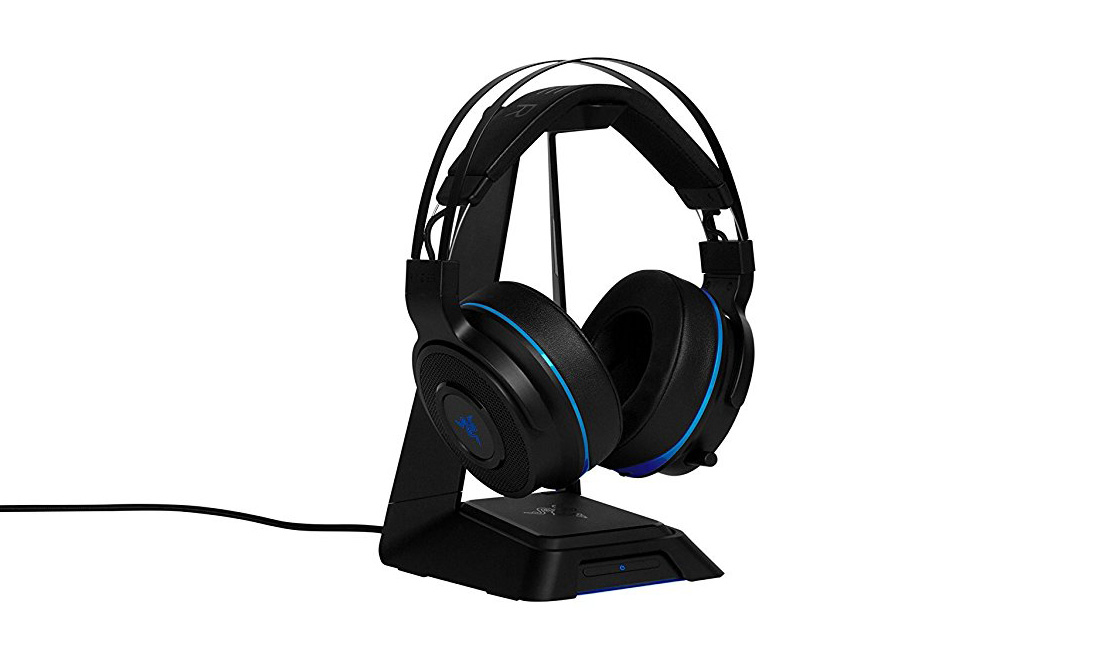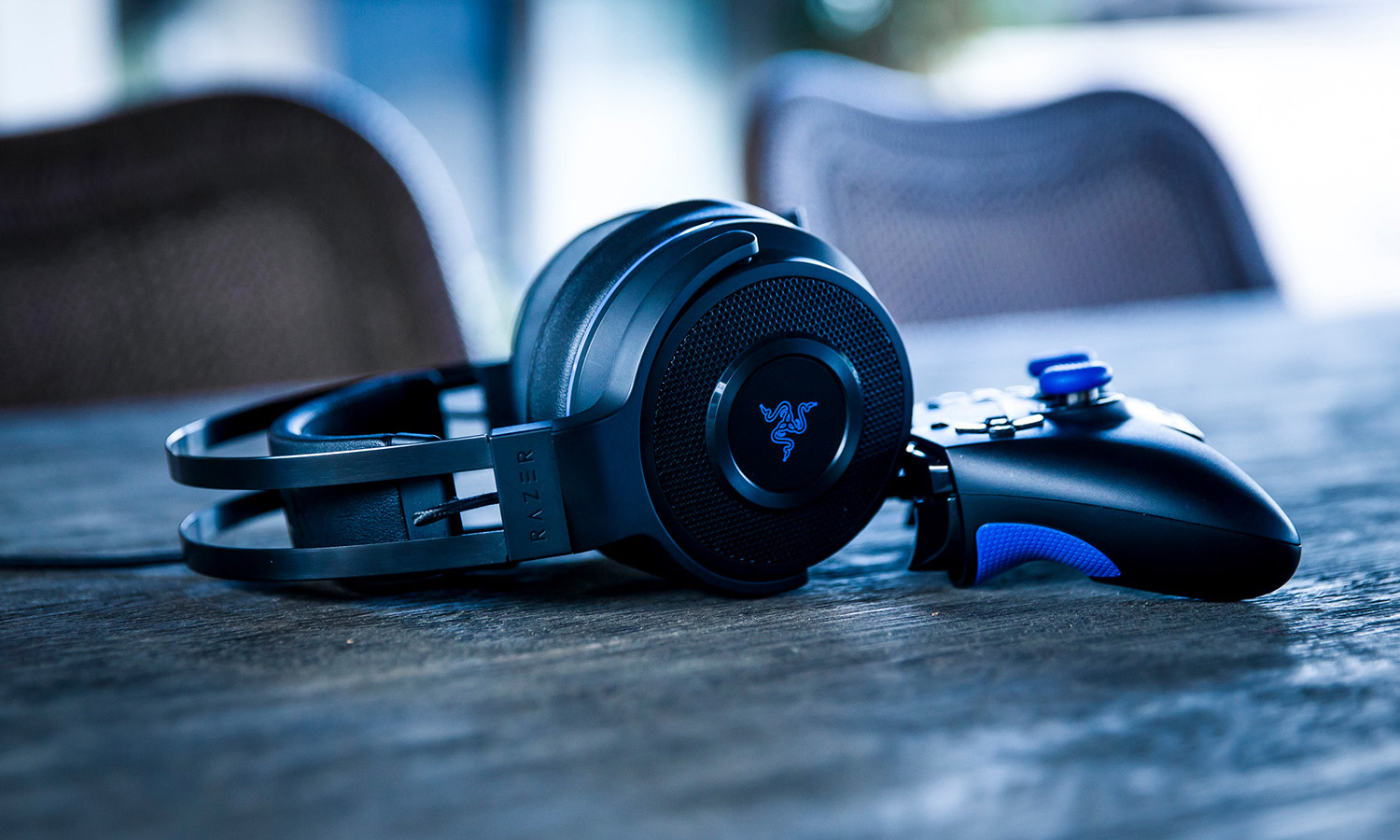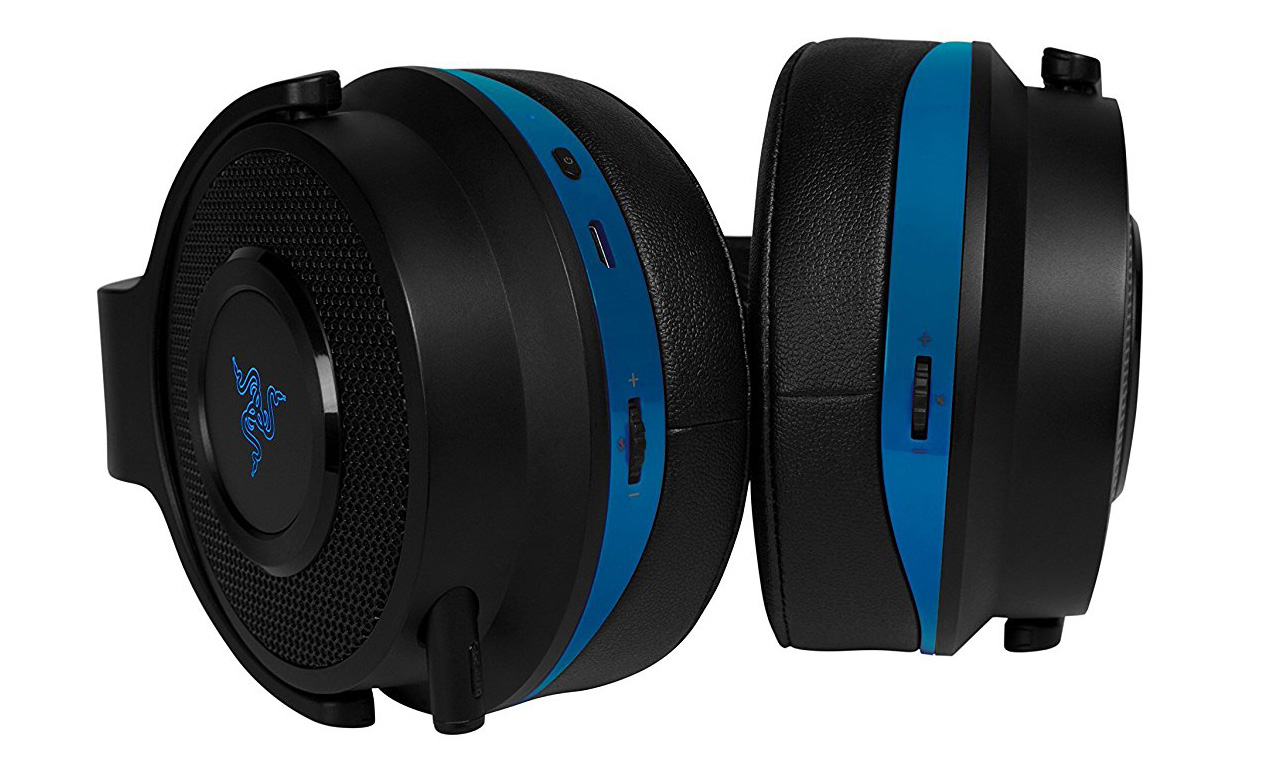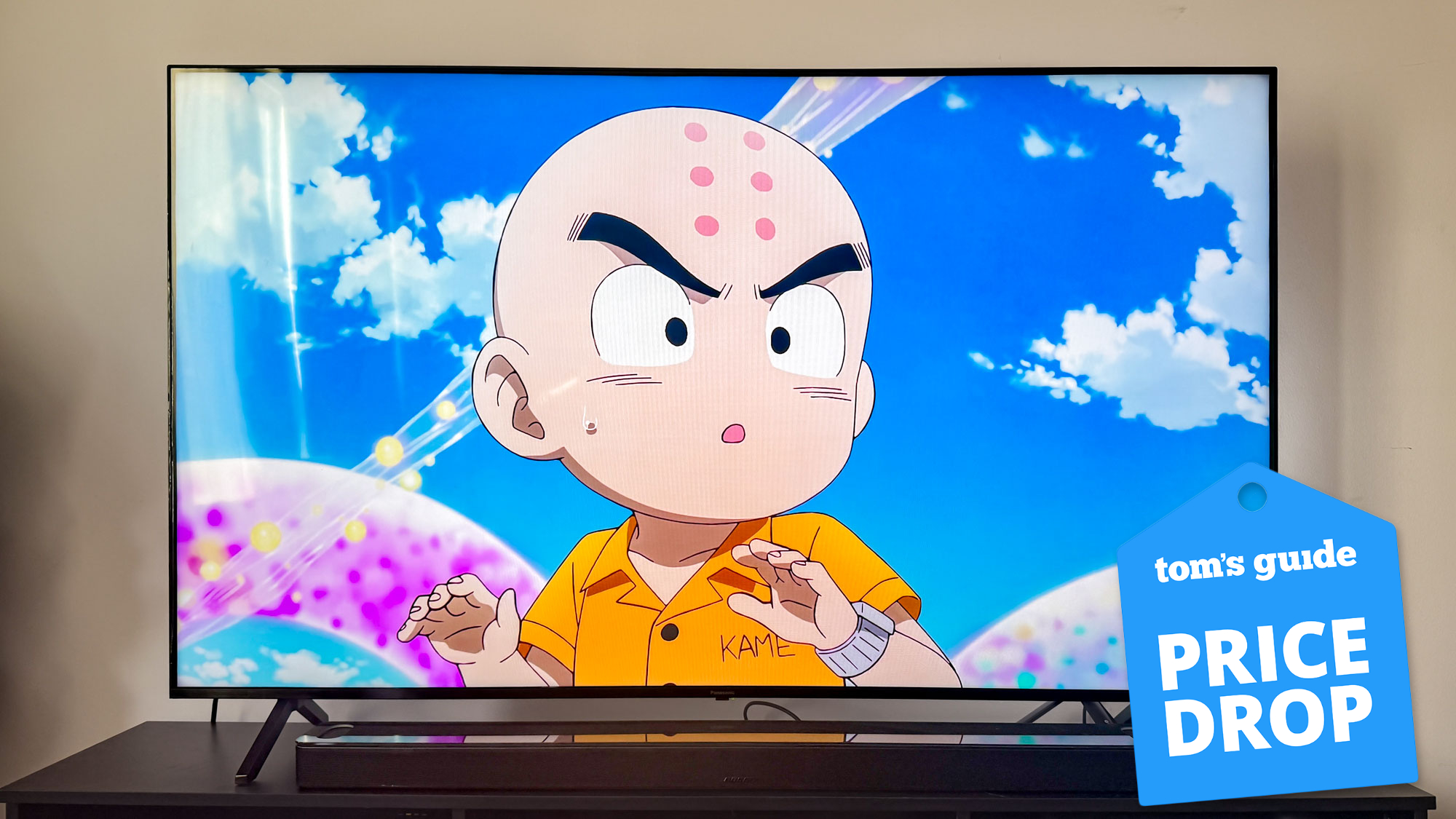Tom's Guide Verdict
The Razer Thresher Ultimate is a beautiful gaming headset, sporting excellent sound quality, a comfortable fit and simple surround sound.
Pros
- +
Extremely comfortable
- +
Fantastic music and game audio
- +
Easy-to-use surround sound
- +
Long battery life
Cons
- -
No 3.5mm audio jacks
- -
Large, potentially unwieldy hub
Why you can trust Tom's Guide
The thresher shark is a beautiful animal, with a long, sleek body; rows upon rows of squid-lacerating teeth; and a distinctive, scythe-like tail. The Razer Thresher Ultimate ($250) is likewise a beautiful gaming headset, sporting excellent sound quality, a comfortable fit and simple surround sound options.
Like the shark that inspired it, Razer's latest headset has evolved to fill a very specific niche: namely, marrying PC-quality audio with console simplicity. It's not cheap, and a few missing features make the price worth questioning. Still, the Thresher looks great, sounds great and feels great, and those three qualities alone make it one of the best gaming headsets you can buy.
Design
Razer is in the habit of making big headsets, and the Thresher Ultimate is no exception. Measuring 7.7 x 8.4 x 4.1 inches, the Thresher is the kind of thing you probably wouldn't stash in your backpack — which is fine, since it doesn't have any 3.5mm audio jacks, anyway. Razer's headset is very much a peripheral that will live at home, especially considering that this headset's USB receiver plugs into a 10-inch-tall headset stand.

I'm of two minds about the stand/receiver combination. On the one hand, it's an attractive, sensible way to store your headphones when they're not in use; on the other hand, it's huge, and users have to carve out a fair amount of space for it. The Astro A50 has a similarly large stand, but it's a little more aesthetically pleasing and automatically charges the headset. In comparison, the Thresher's storage can't help but feel like a step down. It's worth noting that the hub connects via digital-audio cable, though, so you're likely to get better sound this way than if you just use a USB dongle.
Although the Thresher Ultimate is about the same size as other Razer headsets like the Kraken or the ManO'War, its overall appearance is much sleeker — and its design is much better. Rather than an enormous, padded headband with rigid notches, the Thresher adopts a SteelSeries-style flexible headband that requires no manual adjustment whatsoever. You just put it on your head, and it fits. The sooner every other headset manufacturer adopts this ethos, the better, as far as I'm concerned.

Although you won't be wearing this headset much outside, the Thresher is pretty, too. With an arching steel headband, mesh ear cups (with blue highlights for the PS4 version, or green for the Xbox One) and an extendable microphone, the Thresher Ultimate has nothing extraneous and just enough flourishes to look distinctive. There's also an audio volume dial on the right ear cup, which doubles as a mute button, and a chat volume dial on the left ear cup, which doubles as a mic-mute button.
MORE: The Best Headsets for Immersive Gaming
Get instant access to breaking news, the hottest reviews, great deals and helpful tips.
Comfort
Considering my ambivalence about Razer's other headsets, I was pleasantly surprised to find that the Thresher is one of the most comfortable headsets I've ever used. The flexible headband ensures that you'll get a perfect fit, while the ear cups make a firm seal around the ears without ever feeling uncomfortable. Even when I was wearing glasses, there was little sense of pressure, and once the headset was on, it didn't need any adjusting.
I handed it off to a co-worker, who described the peripheral as "supremely comfortable." He also lamented its lack of a 3.5mm audio jack, but had nothing but glowing praise for the way it felt.
Gaming Performance
I tested the Thresher with a variety of PC and PS4 games and was impressed with its performance across the board. (The PS4 and Xbox One versions are not 100 percent cross-compatible; you can get stereo sound on either system, but you can get only surround sound on PC and whichever console your headset favors.) Turning on surround sound was a huge boon in Mass Effect Andromeda, where I could hear my enemies coming from around corners or above me. The boom of rockets and the crackle of gunfire sounded explosive and percussive, drawing me further into the experience.

Games that weren't optimized for surround sound also worked just fine. The sweeping scores and copious dialogue in Final Fantasy XII: The Zodiac Age and The Witcher 3: Wild Hunt sounded crystal clear, as did the clangor of swords and the hoofbeats of horses.
For games of a competitive bent, players can make use of a control dial for chat volume on the left ear cup. This works well, helping players balance chat with in-game audio. The headset is excellent at balancing music and voices, which also comes in handy if you're listening to music.
MORE: Our Favorite Gaming Keyboards
Music Performance
When it comes to music, the Thresher sounds almost as good as a dedicated pair of audio headphones. I used it for about a day, listening to a selection of music I'd normally hear while working. I heard the subtle and rhythmic supporting banjo on Flogging Molly's new "Life Is Good" album, as well as a remarkable balance among all four voice parts in Handel's "Messiah." The Rolling Stones came through with lifelike percussion, guitar and vocals.
Since the Thresher doesn't support 3.5mm audio jacks and since you're likely to have it connected to a console most of the time, its excellent support for music may not get as much use as it really deserves, and that's too bad. Consider playing some tunes from your PS4 or Xbox One (or leaving the Thresher hooked up to your PC every now and then) the next time you're doing housework or reading. You might be surprised by the quality.
Features
Unlike most Razer products, the Thresher Ultimate does not have any special features with its Synapse software. What you see is what you get, either on console or PC: surround sound and not much else. That's not necessarily a bad thing; the Thresher's single sound profile is exquisitely balanced, and I'd rather have that than a bunch of half-hearted equalization options that players would never use.
The headset will get about 16 hours of battery life (it didn't drain completely during our time with it, but Razer's estimate seems pretty accurate), and it recharges via standard micro USB. While this means you probably won't be able to listen while you recharge the headset, that inability shouldn't be too much of a problem, unless you normally play in 17-hour bursts. (If you do, consider calling your family; they are worried about you.)

What I'm less thrilled about is that the button to activate or deactivate surround sound is on the USB hub, not the headset itself. This means that unless you know in advance whether your game supports surround sound, you could wind up making a few obnoxious trips away from the couch until you decide whether to go with stereo or surround.
The extendable microphone is pretty good. When I recorded my voice with it, I found that it was completely audible but had a slight fuzz around it as though I were speaking through a piece of paper. It's not nearly enough to put a cramp in anyone's competitive style, but it's not quite as crystal-clear as the microphones on the SteelSeries Arctis 7 or the Logitech G533.
Beyond that, the Thresher has replaceable ear cups, so you can go for pleather or fabric. Razer hasn't announced a price for the fabric set yet, but just being able to remove the ear cups is a nice touch. They get sweaty, and washing them now and then isn't the worst idea.
MORE: The Best PC Games to Play Right Now
Bottom Line
The Thresher Ultimate has a few undeniable shortcomings. The hub is unwieldy; the lack of a 3.5mm jack is annoying; the lack of customization options on PC is uncharacteristic for Razer headsets. Still, the peripheral delivers where it counts. The Thresher is one of the most comfortable headsets on the market; it delivers gorgeous sound for both games and music, and the surround sound is both immersive and easy to use.
Whether the device merits $250 largely depends on how much you need a surround-sound headset for console gaming. If wireless stereo suits you fine, the Logitech G533, SteelSeries Arctis 7 or Razer ManO'War all deliver excellent sound at much lower prices (although they don't use digital audio, so the Thresher still has an edge in that department). The Astro A50 offers similar console performance but costs much more money.
Then again, the Thresher Ultimate is, above all else, very, very comfortable. If you're going to be gaming for hours on end, that may well be the deciding factor in a headset.

Marshall Honorof was a senior editor for Tom's Guide, overseeing the site's coverage of gaming hardware and software. He comes from a science writing background, having studied paleomammalogy, biological anthropology, and the history of science and technology. After hours, you can find him practicing taekwondo or doing deep dives on classic sci-fi.
-
Tripack OK... Now with the prices' policy at RAZER, you could expect some sort of customer service... Unfortunately, and it is a big issue in the community, their support is worth... ZERO, ZILCH, NADA...Reply
If you have an issue (like I did with both my keyboard Chroma Blackwidow Stealth and my headset Kraken), you will probably play ping-pong with their support, and at the end of the day, get no answer whatsoever, apart from the usual "we apologize for the inconvenience..." or even worse the typical ISP's answer... "What is your system ?" implying that the culprit is YOU, or "please kindly monitor your computer" which basically means "get the hell out of here..."...
Let's hope that RAZER customer support will improve fast, because as of now and like many others, I go back to Logitech !

